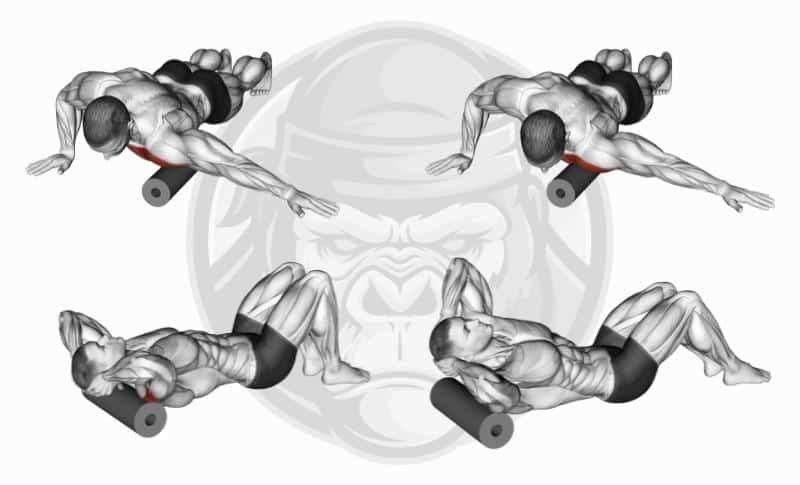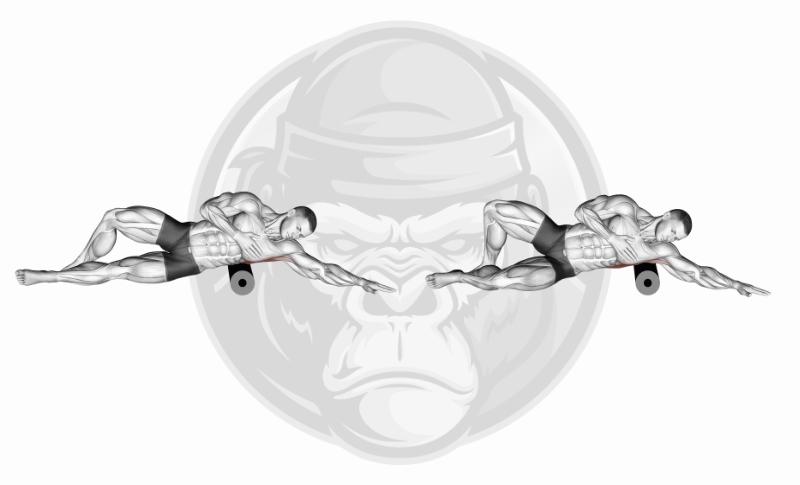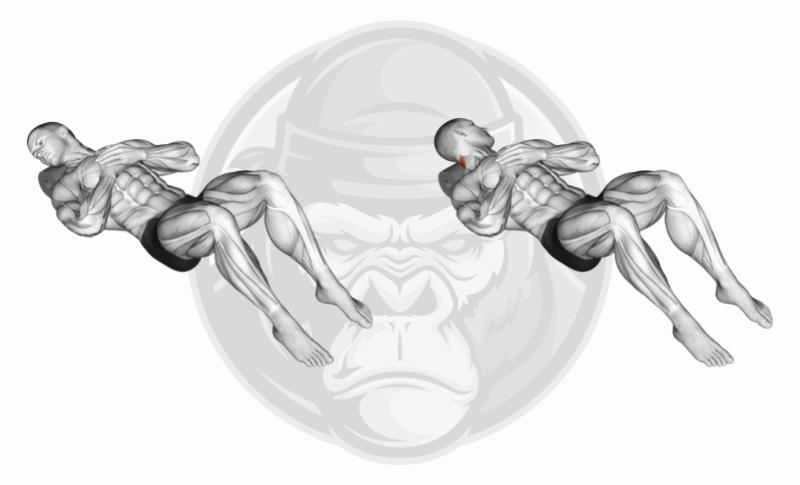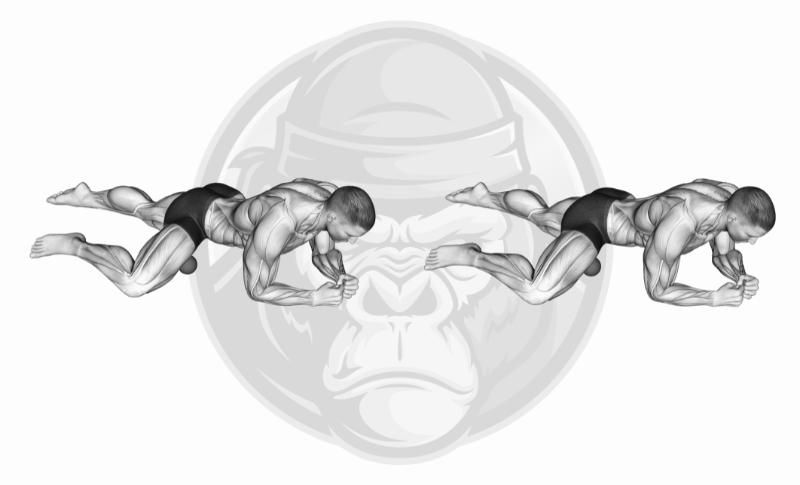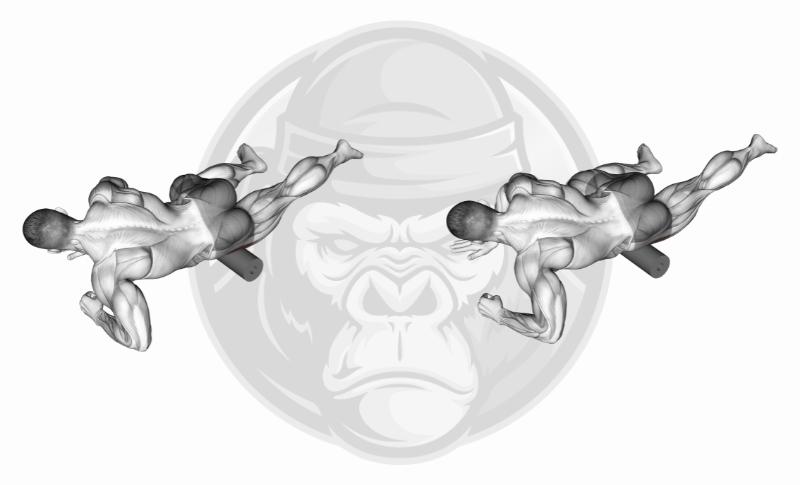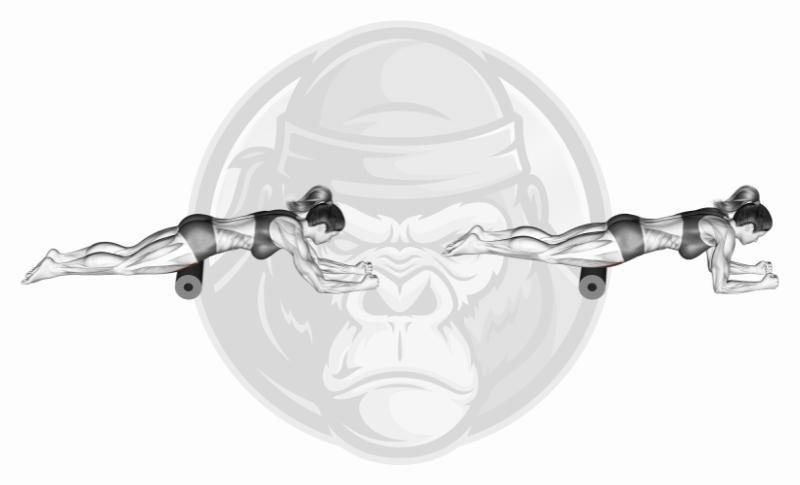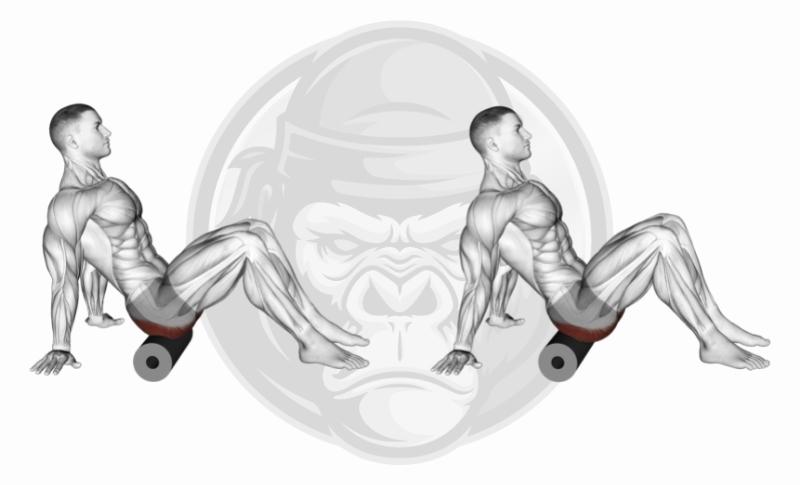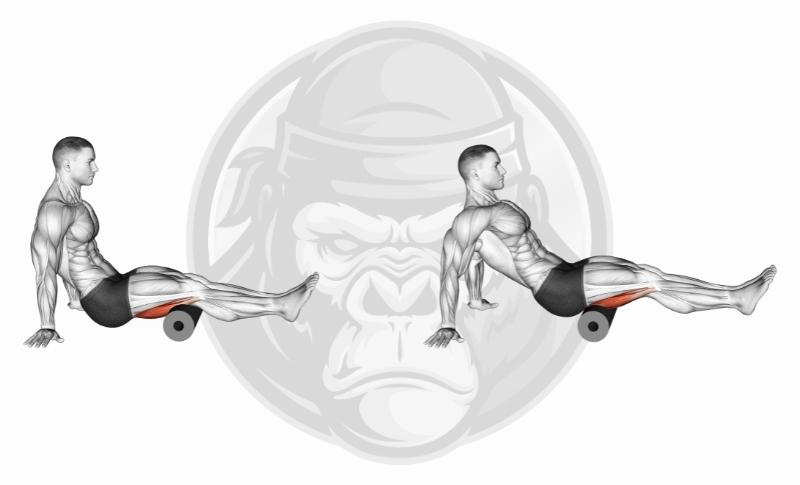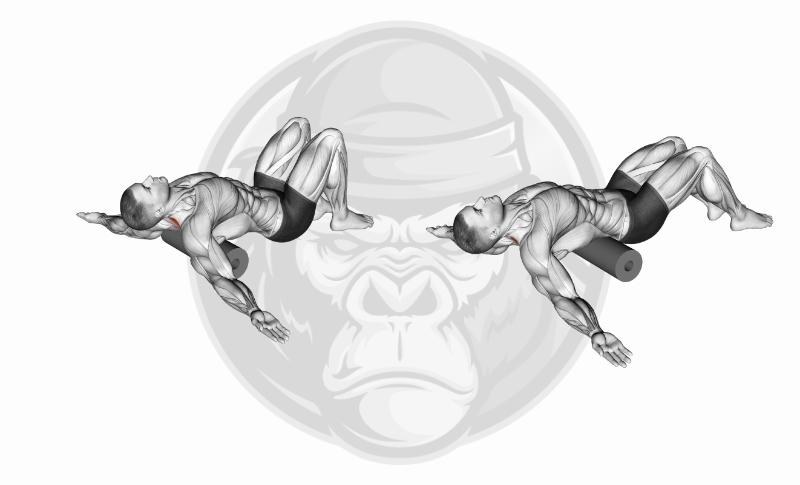Training
The 10 Best Foam Roller Exercises
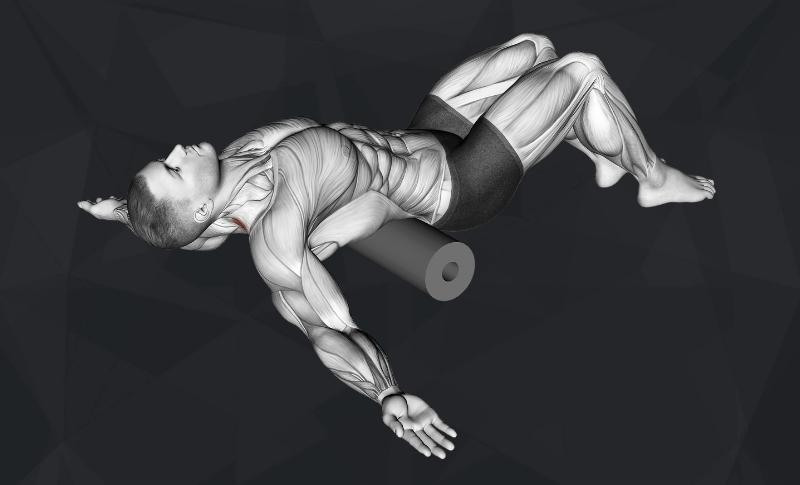
What are the best foam roller exercises?
The best foam roller exercises work together with your gym and sporting activities to ease tension and relieve pain throughout your body.
What’s more, they are very easy to learn and can be integrated into both warm-up and warm-down exercise routines.
If you want to develop your muscles and improve performance safely, integrating the best foam rolling workouts into your schedule will significantly reduce the risk of injury.
All-round core strength and balance are also improved with foam rollers, so even if your workouts are light, you’ll still benefit from these foam rolling exercises.
The Best Foam Roller Exercises
Our exercise routines are created by determining the best exercises for muscle growth, core strength, and overall health and well-being.
Here’s our list of the 10 best foam roller exercises:
10. Shoulders
Great for:
The shoulders are hot spots for the build-up of tension and soreness, particularly if you’ve been lifting heavy weights in the upper body or playing racket sports.
Foam rolling this area helps to alleviate soreness from these activities and minimize any risk of injury.
How to do it:
To perform the roller exercise for shoulders:
- Lie down on the floor on your right-hand side
- Place the foam roller under the right side of your chest
- Extend your right arm all the way out, pointing away from your head
- Stretch your right leg out in the opposite direction
- Prop yourself up slightly using your left foot, hooking the leg in front of your right leg
- Place your left hand on your hips with your elbow pointing upwards
- Roll back a touch, so your shoulder makes contact with the foam roller
- Roll back and forth, moving the roller slightly towards your legs, then back slightly towards your head
Why:
Foam rolling shoulder exercises lower inflammation and reduce soreness after a workout.
They can also help loosen your shoulder muscles in preparation for upper body workouts and sports.
When:
Shoulder joints and ligaments are especially prone to damage, so using the foam roller for both warm-ups and warm-downs will help unknot your deltoids and improve shoulder flexibility.
9. Lats
Great for:
Weightlifters and athletes who put extra strain on their backs will gain relief from pain and soreness performing the lats foam roller exercise.
It’s great for giving your upper back and sides a soothing foam rolling massage and aiding with any back pain issues.
How to do it:
To help ease tension in your lats, follow these instructions:
- Lie down on the floor in the side plank position, placing the foam roller to one side under your back roughly 3 inches below your armpit
- Straighten your arm with your palms facing upwards
- Lift your hip up slightly, so the pressure is shifted to the lat muscle on the foam roller
- Roll to your armpit, moving the roller around on any tender spots
- Stop and hold the position on any tender spots you find
Why:
If you suffer from pains in the back, this should be your go-to foam rolling exercise since it relieves tension in your lats and improves your overall posture.
When:
Since your lats play a role in a wide range of routines, it’s worth including this exercise as part of a full-body warm-up or to aid recovery from a heavy weights session.
8. Traps
Great for:
Stress and tension in the upper back/shoulder region can be the source of a great deal of discomfort.
Foam roller exercises for traps kneed out knots in these muscles and relieve aches and pains.
How to do it:
To foam roll your traps:
- Sit on the floor with your knees bent, then lie back with the foam roller on your mid-back
- Tuck in your chin and place your hand behind your head. Don’t interlock your fingers
- With your core engaged and feet flat on the floor, lift up your hips to shift your weight onto the roller
- Roll up and down your back over your traps, covering the middle of your back to the bottom of your shoulders
- Hold for 30 seconds on any tender spots you find
Why:
Posture, neck, and head mobility are all impacted by the condition of your traps, so it’s important to keep these muscles well-conditioned with foam rolling exercises.
Foam roller workouts for traps will keep this muscle flexible and supple.
When:
Exercises that really give your traps a workout, such as military presses and pullup shrugs, can place a real strain on your traps.
Plan your foam roller workouts around these sessions to improve recovery and performance.
7. Adductors
Great for:
Exercises and other activities which emphasize the legs will inevitably lead to stresses and strains in this region.
The best foam roller exercise for adductors are particularly useful for joggers and runners who want to increase circulation and suppleness.
How to do it:
To perform the adductors foam roller exercise:
- Lie on the floor on your front, supporting your body with your right forearm and right leg
- Place your left leg over a foam roller placed parallel with your body, so you can roll it towards you when performing the exercise
- With the foam roller sitting just above your left knee, engage your core
- Slowly roll the foam roller towards your body, holding on to any tender spots
- Keep your adductors relaxed as you work over the muscle for any additional tender spots, working up to your inner groin area
Why:
Using a foam roller exercise that targets the adductors helps to relax tight areas in the muscles and soften the surrounding connective tissue.
This improves recovery rates for activities such as running, swimming, or intense racket sports such as squash.
When:
You can use the adductors exercise with the foam roller before and after leg-heavy workouts, as well as cardio-based sports, which involve a lot of running.
6. Hip-Flexors
Great for:
This foam roller exercise isn’t just great for people who like to work out; it’s also an effective way to alleviate pain and strengthen muscles in the hips for those who spend a lot of time sitting at a desk.
How to do it:
Lie face down on an exercise mat, then:
- Place the foam roller underneath your right hip
- Place your left leg to the side, bending the knee at a 90-degree angle
- Support your body weight by placing your elbows on the mat in front of your head
- Stretch your right leg directly behind you, pointing your toes
- Gently apply pressure to your hip flexors as you roll backward and forwards
Why:
Posture and balance are all affected by the strength of our hip muscles. The foam roller hip-flexor exercise grants extra flexibility by loosening the connective tissue and relaxing the muscles.
When:
If you’re feeling stiff in the hip region, hip-flexor foam roller exercises will reduce the pain and help you to limber up.
Also, consider including these as part of a warm-up before you hit the gym, particularly for a full-body session.
5. Quadriceps
Great for:
As with the foam roller exercises for the adductors, quadricep foam roller exercises are a good way to reduce inflammation and soreness in your legs after a long run or swim.
How to do it:
To target your quadriceps with your foam roller:
- Lie on your front with your bodyweight on your forearms held together under your chest, with the roller crossing your quads
- With the roller just above your knees, roll back from your arms with your body straight, so the foam roller comes up over your quadriceps
- Roll back and forth with the roller moving up and down from the pelvis to just above the knee. Maintain and engaged core
- Avoid moving the roller over your kneecaps
Why:
Pain reduction and improved flexibility are two principal benefits from quadriceps foam roller workouts and are also highly effective for any corrective program based around injury rehabilitation.
When:
Quadricep foam roller workouts should be included before and/or after leg days in the gym or any high-intensity cardio session.
4. Glutes
Great for:
If you’re performing heavy compound exercises such as squats, your glutes are guaranteed to get a thorough workout.
Foam roller exercises for glutes can help you to minimize those rest-day sore spots around your hips and bum.
How to do it:
To use a foam roller to ease tension in your glutes:
- Sit on the foam roller on one side, focusing weight on the glute muscle on the side you’ve chosen
- Straighten your legs so the pressure is on the glute, and stretch out your arm to support your weight and balance correctly
- Roll slowly up and down the glute muscle keeping a tight orbit on the muscle
- Hold on to any tight spots, relaxing the glute muscle
Why:
Glutes are the principal muscles protecting your body’s core. Taking care of this muscle group should be part of your overall strength and conditioning approach to core maintenance.
When:
If you know you’ll be going hard on core exercises, include a set of foam roller exercises for glutes before your session to help limber up your muscles.
3. Hamstrings
Great for:
Hamstring injuries are common occurrences for people who play sports such as football, basketball, and tennis.
Foam roller exercises not only reduce the risk of such injuries but can also work to lower pain if you strain or tear these muscles.
How to do it:
To foam roll your hamstrings:
- Sit up on the mat supporting your upper body by placing your hand’s palms down behind you and your arms straight
- Place the foam roller underneath your upper legs beneath your hamstrings
- Slowly roll the foam roller under your thigh from your glute to your knee and back again
- Pause for 30 seconds when you find a tight spot until the pain ends
- Turn a little from side to side, so the roller works all the hamstrings
Why:
Since the hamstrings are among the most frequently injured muscles among sporty people, these roller exercises help to keep them loose and maintain a healthy flow of blood.
When:
Rolling your hamstrings with a foam roller after any sports or gym training sessions that emphasize these muscles will lower any soreness you experience, as well as improve overall flexibility.
2. Calves
Great for:
Runners who experience calf pain, as well as stress around their shins, will benefit greatly from regular foam roller calf exercises.
They will also help if you suffer from any Achilles tendon issues.
How to do it:
Get down on your mat with the foam roller, then:
- Sit up on the mat supporting your upper body by placing your hand’s palms down behind you and your arms straight
- Place the foam roller underneath your calves
- Lift yourself off the ground with your hands, so your weight is resting on your hands and calves
- Roll the roller back and forth over your calves, looking for any tight spots to hold on
- Twist slightly to the sides as you roll to cover all your calf muscles
Why:
It can be easy to pull a muscle in your calves, especially if you’re running outdoors on uneven terrain.
Use the calves foam roller exercise to ease tension and work through any tight spots, as well as improve blood flow in your legs.
When:
Include this roller workout after a long run or other intense leg-based sport, as well as after heavy sessions in the gym where your legs are the predominant muscles used.
1. Back
Great for:
The back exercise with foam roller should be used by anyone who is active in sports or weight lifting.
Back injuries are common, especially when you don’t pay enough attention to rest and recovery.
This exercise maintains these muscles while working towards improving posture and stability.
How to do it:
This roller exercise targets the lower back. Here’s how to do it:
- Lie on your back with the foam roller horizontally below your back
- Bend your knees, pressing your feet firmly to the floor, then pull your knees up to your chest and hold them there with your hands below the knees
- Roll side to side on the foam roller positioned across your lower back just above your glutes
- Hold the position for 30 seconds on any tight spots you find
Why:
Stress, pain, and muscle tightness in the back derive from a host of sports and gym workouts.
Foam roller back exercises will prevent any discomfort from becoming chronic pain while improving lumbar support.
When:
Include this foam roller exercise regularly to maintain a healthy back and good posture.
3-4 times per week should be your baseline for this, whether in warm-ups, warm-downs, or as part of core routines.
FAQs About Foam Roller Exercises
Still not quite sure why you should consider including foam roller exercises in your workouts? This FAQ should help clear things up for you.
Q: What does foam rolling actually do?
Foam rolling is a self-myofascial release (SMR) technique, which massages your muscles to help release tension and stress.
They also improve blood flow around your body while aiding joint motion.
Q: What are the benefits of foam rolling?
Incorporating regular foam rolling exercises as part of your broader workouts or sports activities reduce the risk of muscle and joint damage.
They also help to improve coordination and flexibility by working on key joints.
Q: Is foam rolling better than stretching?
Foam rolling and stretching accomplish different tasks.
Ideally, you should consider using both when appropriate as part of your warm-up and warm-down routines or combine the two with foam roller stretches.
There are some areas of your body where you should avoid foam rolling, and in these cases, stretching may be more appropriate.
Q: How long should you foam roll for?
When performing foam roller exercises, you should aim for between 30 and 90 seconds for each set.
If you’re especially tense and there are more tight spots to work through, you might choose to perform the exercises for longer.
Include these roller workouts whenever you work the relevant muscles, adjusting the frequency based on the intensity of your workouts.
Q: Can you foam roll every day?
There’s nothing wrong with performing moderate foam roller exercises daily, and they can be a great way to work through pain and stress in your muscles from other workouts.
If you’re new to foam rollers, you may find it takes time to get into the swing of things, so persevere, and you’ll soon notice improvements.
Summary
The best foam roller exercises can be incorporated into any warm-ups to target the muscles you’re preparing to work.
They’re also great ways to alleviate post-workout stress and strains, making them great all-round exercises to relieve tight muscles and the general wear and tear your body gets from working out.
Here’s a quick recap of the 10 best foam roller exercises:
- Back
- Calves
- Hamstrings
- Glutes
- Quadriceps
- Hip-Flexors
- Adductors
- Traps
- Lats
- Shoulders

